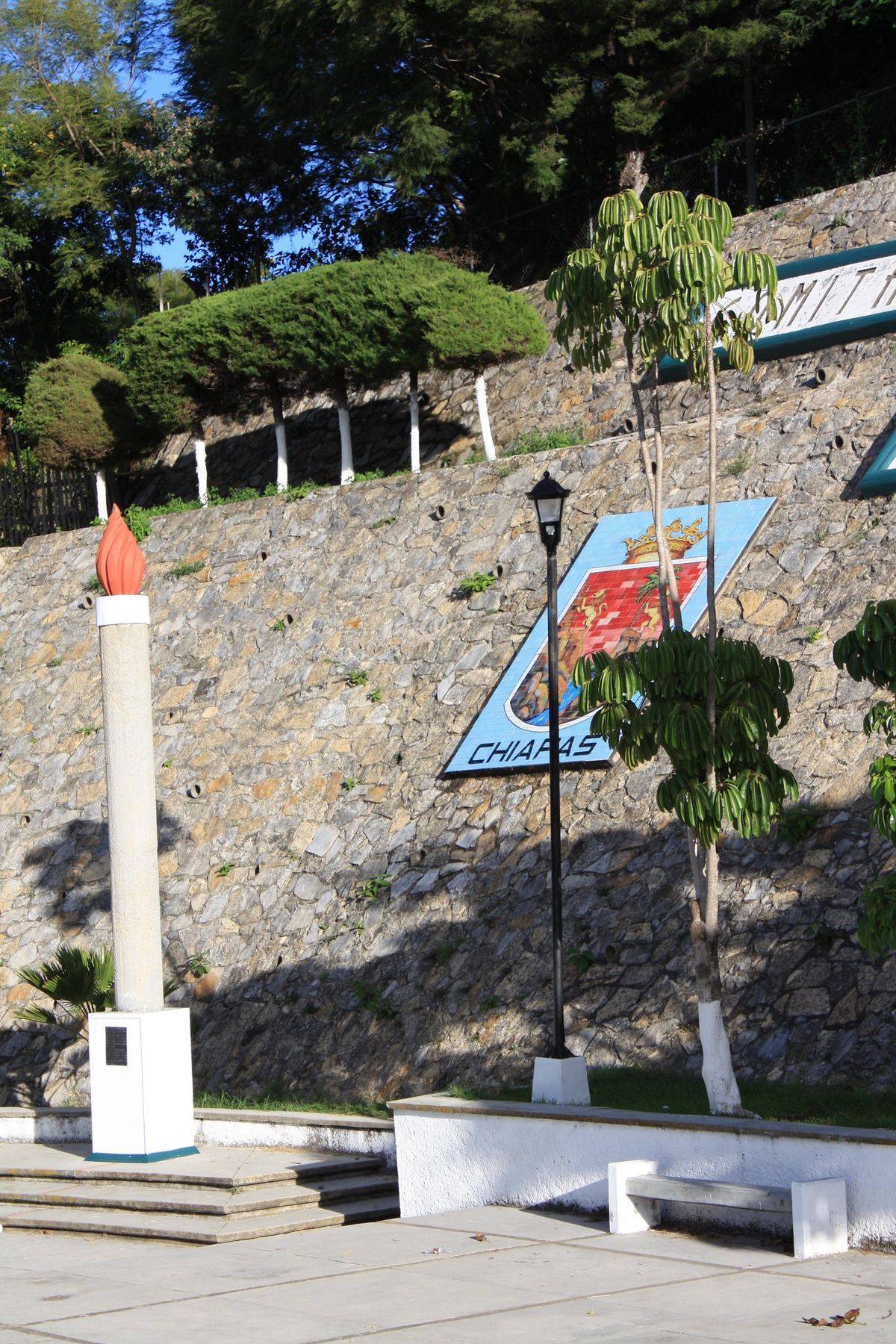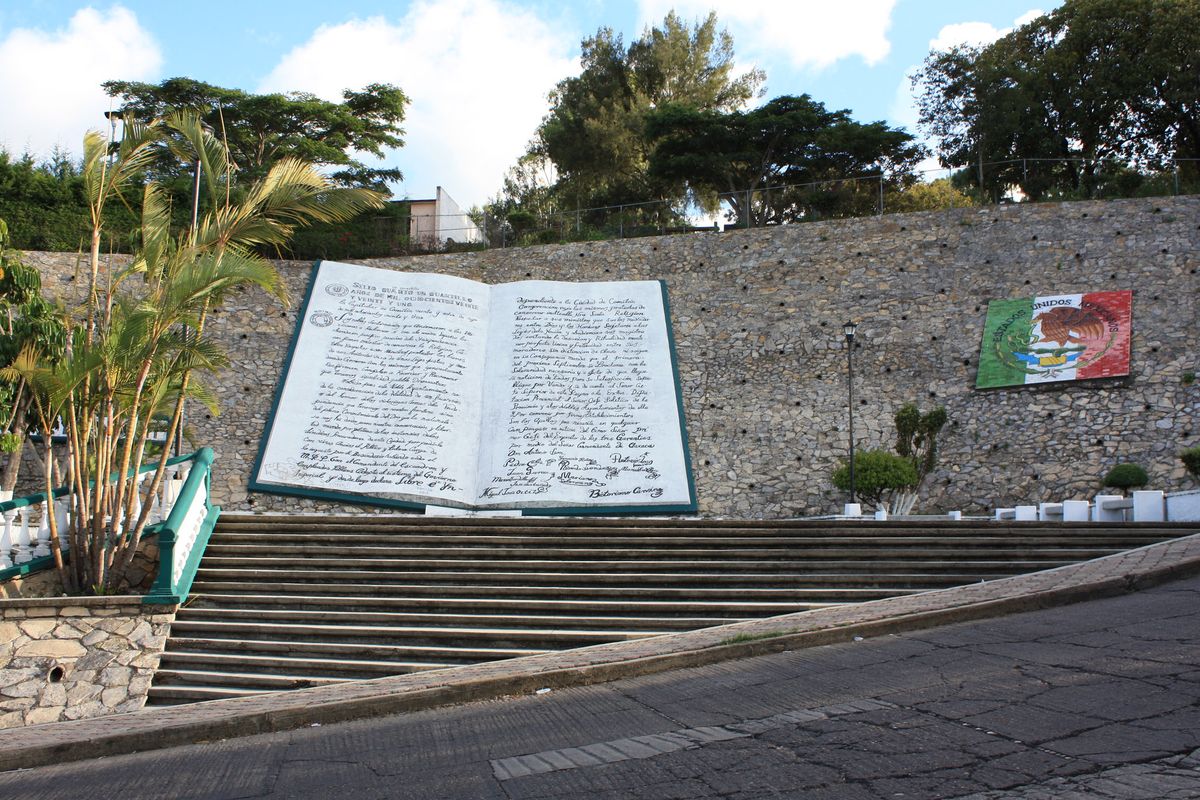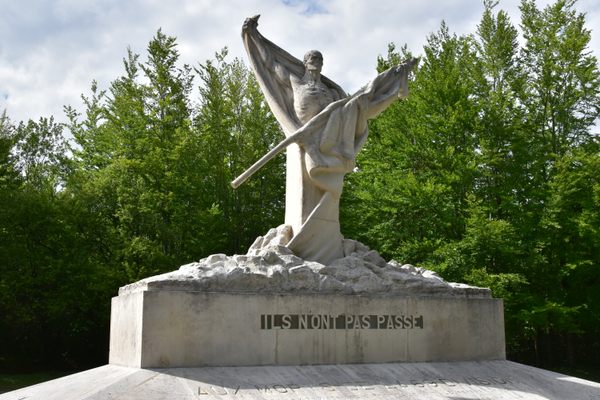About
Following the end of the Mexican War of Independence in 1821, what is now known as Chiapas, was then the southernmost territory administered by the newly independent country. Unsure if Mexican authorities would declare sovereignty, local rulers met in the de facto capital of Comitán and voted to declare Chiapas an independent nation.
However, it was Guatemalan authorities who effectively began administering the territory until Chiapas also declared independence from Guatemala a few months later. This independence lasted until 1824, when a vote occurred in Chiapas where joining Mexico was more preferred than living under Guatemalan control. Chiapas became the 19th Mexican state on September 14, 1824.
Given Comitán's role as the capital of the territory during this period of uncertainty, the location of the monument is not surprising. Consisting of walls following the slope of the hill it sits on, the monument also features columns reminiscent of lit beacons. There's also a massive reproduction of the Chiapanec Declaration of Independence (which is how it earned the nickname "The Book"). Large tiled mosaics with the coats of arms of Chiapas and Mexico, along with the tricolor of the country's flag, complete the monument.
While not much information is available regarding the authorship of the monument itself, it's a symbol of a huge part of the region's history.
Related Tags
Community Contributors
Added By
Published
February 3, 2020

























